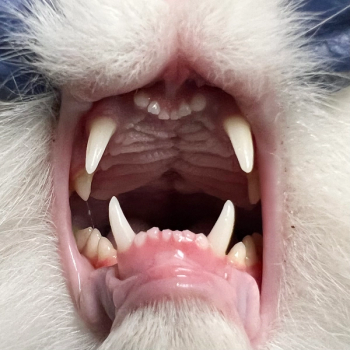
Exploratory celiotomy (Proceedings)
Surgical exploration of the abdomen is performed for diagnostic, therapeutic, and prognostic purposes.
Surgical exploration of the abdomen is performed for diagnostic, therapeutic, and prognostic purposes. With development of ultrasound diagnostic capabilities and ultrasound guided biopsy techniques the need for diagnostic surgical exploration has seemingly declined in our practice. Ultrasound diagnostic capabilities are not present in all practices and are operator sensitive therefore the principles for surgical exploration of the abdomen continue to be important. These principles include the need for complete and thorough exploration of all structures, biopsy and/or culture of appropriate tissues, and performance of a therapeutic operation when possible. Depending upon the goals of surgery, in some cases minimally invasive surgical techniques may be appropriate and may be used rather than conventional exploratory celiotomy.
Technique
A complete and thorough examination of abdominal viscus is indicated. Good operating room lights properly positioned aid the surgeon in accurate examination of the abdominal cavity.. Surgery is initiated with a generous abdominal incision that allows access for palpation and visualization of all structures. The incision typically begins at the xiphoid cartilage and continues caudally to approximately half-way between the umbilicus and pubis. Extension to the pubis may be necessary especially for caudal structures such as the prostate and urethra. Entrance to the abdomen is accomplished and the falciform ligament removed by excision along its lateral attachments to the abdominal wall and ligation at its cranial aspect. Falciform excision is elective, however visualization and surgery, especially of the cranial abdomen is enhanced. In addition, closure of the abdominal wall at the conclusion of the celiotomy is also eased by falciform excision. Visualization of the abdomen is further enhanced by placement of Balfour self-retaining retractors after laparotomy pads moistenend with saline have been placed to protect the abdominal wall . Other valuable instrumentation includes malleable retractors which are useful to retract abdominal viscus. A natural desire of the surgeon to focus on an obvious lesion is ignored initially in most cases in favor of a complete abdominal exploration. Large splenic or hepatic tumors may have to be treated/excised initially to permit adequate exploration of the abdomen. Some surgeons routinely exteriorize the spleen and protect it with laparotomy pads which eases exploration of the remainder of the abdomen. Finally, disease that is treated aggressively before exploration includes active hemorrhage and leakage of gastrointestinal contents.
Exploration of the abdomen is performed in a systematic fashion either by a systems or anatomic "quadrant" approach. In a systems approach each system such as gastrointestinal, urinary, hepatobiliary, and lymphatic are examined thoroughly. In a quadrant approach the abdomen is divided into 4 quadrants and structures located in each area explored. Exploration includes examination of the pancreas and both adrenal glands in addition to the systems mentioned. Caution is advised regarding intraperative decision making based on the appearance of disease. For example, pancreatitis often takes on the appearance of and can be confused with aggressive disease (neoplasia). Intraparenchymal benign hepatic lesions may be nodular hyperplasia rather than metastatic disease.
The surgeon should be comfortable with common abdominal operative procedures such as gastrotomy, enterotomy, intestinal resection and anastomosis, splenectomy, and cystotomy. Hepatic neoplasia requiring lobectomy, biliary diversion techniques, gastrointestinal rerouting, adrenal masses, and ureteral surgery are examples of more advanced surgical techniques that may warrant referral to a surgical specialist.
If disease is encounterd that the veterinarian is uncomfortable treating, i.e.- a large hepatic tumor, then incisional biopsy is often appropriate and may be useful in guiding further therapeutic decisions.
Biopsy Techniques
The surgeon should anticipate and assume that biopsies will be necessary during exploration. Abdominal viscus that is commonly biopsied in individual cases may include the liver, stomach, small intestine (duodenum, jejunum, ileum), kidney, lymph nodes,spleen, and prostate. A decision to take specific organ biopsies is based on the history, clinical signs, laboratory data, and appearance of tissue at the time of surgery. Due to its contaminated nature, the colon is not routinely biopsied unless a specific lesion is identified or suspected.
Liver is easily biopsied by the "guillotine" method in which a loop of absorbable suture is used to encircle a portion of liver on the periphery of a lobe. The suture is slowly tightened so as to strangulate a portion of tissue and the tissue is excised several millimeters distal to the ligature. Use of a skin biopsy punch is also quick and easy for obtaining hepatic biopsy especially when the lesion is more centrally located rather than the periphery of the liver. The instrument is inserted into the parenchyma to be biopsied and then slowly twisted partial thickness into hepatic tissue. The tips of scissiors or a scalpel are used to free the deeper attachments of the tissue within the liver. Hemostasis is conveniently provided by placing a small plug of gelatin hemostatic sponge within the biopsy site.
Prior to biopsy, the gastrointestinal tract is packed off with moistened laparotomy pads from the remainder of the abdomen. The stomach and/or intestine are biopsied by making a full thickness 3-5 mm elliptical incision into the lumen either transversely or longitudinally with a number 15 or number 11 scalpel blade. The biopsy site is typically closed with interrupted appositional sutures of 3/0 or 4/0 monofilament absorbable suture (polydioxanone or polyglyconate) on a tapered needle. The intestine is "leak tested" by iunjecting saline into the biopsied segment while the area is occluded digitally or with Doyen forceps.
Lymph nodes may be biopsied by excisional or incisional methods. The mesenteric lymph nodes located at the ileocecal junction are often biopsied by incision since excision may disturb blood supply to the intestine. The spleen may be sampled by splenectomy, partial splenectomy or biopsied in a manner similar to the guillotine method described for liver biopsy..
The kidneys are biopsied with a Tru-cut biopsy needle or by incisional wedge biopsy. There is less hemorrhage with the needle technique but tissue sample size is small. Digital pressure is usually sufficient to stop any renal hemorrhage from needle biopsy. Incisional wedge biopsy of the kidney helps to ensure adequate tissue but there is increased hemorrhage and it is necessary to close the biopsy site with one to two mattress sutures of absorbable suture.
Abdominal Closure
Prior to closure the abdomen is lavaged with several liters of warm saline and the lavage completely removed by suction. The abdominal wall is closed with simple continuous or simple interrupted suture of appropriate size. Absorbable suture is typically used however nonabsorbable suture such as nylon is also used successfully.. When a continuous pattern is elected, suture one size larger than normal is often selected for abdominal closure. In either closure, the external rectus fascia is engaged and no effort is made to close the peritoneum or the internal rectus sheath. Exposed muscle is not included in the suture when avoidable. Dead space caused by subcutaneous tissue incision is closed and the skin apposed with staples or suture.
All tissue biopsies are submitted in 10% buffered formalin for histologic excamination. The morbidity and mortality of exploratory celiotmy is directly related to the patient's condition preoperatively and the morbidity of any surgical procedure performed.
Exploratory Celiotomy MISTAKES
• Incision too small
• Failure to do complete exploration
• Failure to take biopsy/cultures
• Failure to place feeding tubes
• Failure in preparation
o -Equipment needed (stapling?)
o -Is blood needed?
Newsletter
From exam room tips to practice management insights, get trusted veterinary news delivered straight to your inbox—subscribe to dvm360.






